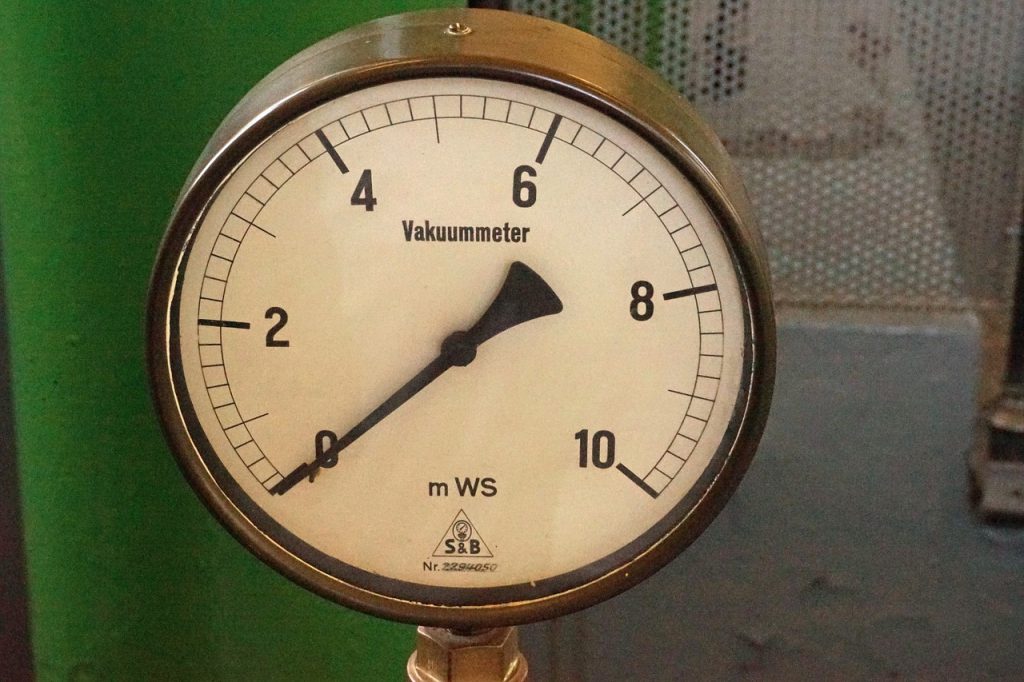It is important to think carefully when choosing a new or replacement meter for your vacuum pump or system.
Various factors affect the overall performance/reliability of the instrument and should be considered when making a decision.
These tips will help you choose the right weight balance for your machine tool.
1.Impact of transaction/application on counter
2.Environmental conditions
3.Vacuum speed and operating accuracy
4.Cost and maintenance
5.User interface with the system
6.Vacuum Analysis Parameters
Before considering these great options, let’s take a look at the types.
Types of Gauges
1.Direct Gauges
These gauges gives you the pressure of the gas-free vacuum system.They work well at pressures above 10-4 mbar. This is because they are dependent on elements in the sensory system, so low pressure does not produce enough cells to produce the visual effects. These include:
Piezo – accurate measurement of vacuum and overpressure up to 1 mbar (accuracy varies below 1 mbar)
Mechanical selection – visual pressure indicator (useful for local screen applications)
Capacitance: very accurate, can measure the atmosphere up to 10-5 meters (very accurate measures 4 decades in the first 2 decades)
Indirect Gauges
Indirect meters are usually based on two dimensional technologies: thermal conductivity or ionization.
The two-dimensional technology depends on the type of gas; So, if you want to know the exact pressure, it is important to know the type of gas you are pumping. Knowing the type of gas a gas filter can use. These shows are divided into three sections:
Piezo ( Thermal instrument )- Used at low and medium pressures, usually as an inexpensive alternative to piezo/capacitance meters when accuracy is not important.
Cold cathode (Ion meter) – used in medium vacuum and high pressure (large parts energy technology).
Heat Cathode (Ion meter) – Used at medium to high vacuum, high accuracy and wide frequency compared to cold cathode technology, requires slightly more power for abrasions and is more sensitive to vibration/resistance and air, but this high vacuum use is great for vacuum use.
1. Vacuum Level and Precision
All other factors are affected by the vacuum level and you will usually need a meter that measures your operating pressure range. Common classifications and ranges are:
Coarse vacuum: up to 1 mbar above atmospheric
Average vacuum: 1 mbar to 10 -3 mbar
Extreme vacuum: 10 -3 mbar to 10 -9 mbar
Extremely high vacuum: 10-9 mbar to 10-12 mbar
2. Impact of Process or Applications on Gauges
How the gauges may be affected plays an important role in the selection. The impact of the application on the selected measurement technology needs to be carefully evaluated, as well as the potential impact of:
Harmful gases such as chlorine or acid mixtures in the presence of water vapor
Frequent release
-voice is vibrating
X -rays or X -rays
Magnetic and electric fields
For example, the Pirani marker is well suited for the application of rough and medium-sized
blanks, such as:
Research and development
Analysis tools
Industrial and coating operations
Cold drying
Process engineering
3. Environmental Conditions
The general location of a particular meter placement may influence the definition of the measuring instrument.
If the meter is installed at a high temperature, there is a risk of leakage of dirt, dust and/or water inside, which may require additional protection for the meter and the appropriate location. resided or relocated. You also need to monitor the distance and the potential impact of radiation damage and emitted signals.
4. The Interface to Your System
Each empty meter sends a signal. Most applications that use a 0-10 V analog signal can be converted to pressure using simple equations.
5. Cost and Service
It’s important to know the pressure you want to measure, but everyone has a budget. You may need an accuracy of 0.1%, but consider whether you can achieve an accuracy of 1% for half the cost. That’s why it’s so important to know the real requirements for effectively monitoring and controlling your system.
Accuracy – As you might think, high accuracy is often higher than price. This is especially true when raw / medium vacuum capacitors are more expensive than a piezometer.
Average pressure – Two types of measurements are often used together or combined in one (joint pressure) to measure different pressures, leading to high costs.
